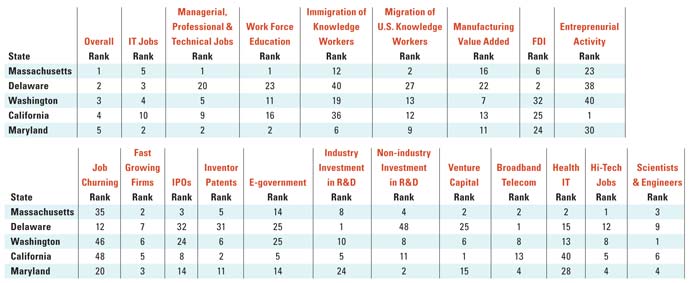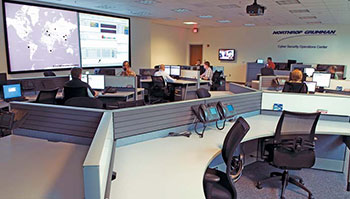Cybersecurity is in the national headlines, after serious data incursions, an executive order from the White House and, in February, accusations of data theft from U.S. companies by a Chinese military group. In Maryland, cybersecurity has been a top priority for years.
It was January 2009 when Gov. Martin O’Malley joined Maryland’s Congressional delegation, federal and military officials and business leaders at the National Institute of Standards and Technology (NIST) in Gaithersburg to unveil a policy report that called for establishing Maryland as the nation’s epicenter for cyber security.
“Cyber security touches everything we do — from grocery shopping to banking, to heating our homes and talking on cell phones,” said O’Malley that day, citing Maryland’s leadership in computer systems design job creation and its institutions’ thought leadership and training in the field. “With 50,000 new computer viruses emerging every day and hackers becoming increasingly advanced, the need to protect our country, our companies and our families has never been more urgent.”

Boeing in October 2011 opened a new 32,000-sq.-ft. (2,973-sq.-m.) Cyber Engagement Center in Annapolis Junction, Md. Boeing and its subsidiaries employ approximately 1,200 personnel in Maryland, with the largest concentrations in Patuxent River, Germantown, Annapolis Junction and Andrews Air Force Base.
Photo courtesy of Boeing
Only now, it’s more urgent.
Maryland is home to more than 50 key federal facilities and 12 major military installations, including the U.S. Cyber Command at Fort Meade (the state’s largest employer), the National Security Agency, the Army’s Communication and Electronics Command (CECOM), now located at Aberdeen Proving Ground, and the Defense Information Systems Agency, which moved to Maryland from Virginia in 2011, bringing 4,300 advanced technology jobs. The Washington Post in January reported that the U.S. Cyber Command is seeking to more than quintuple its staff from 900 to 4,900 over the next few years.
The state is also a leader at all levels of education. Its perennially high R&D ranking can be traced not only to proximity to national government, but also to top-ranked research universities such as Johns Hopkins and University of Maryland, College Park, the University of Maryland, Baltimore and the University of Maryland, Baltimore County. Meanwhile, the just-published annual “Quality Counts” report from Education Week and the Editorial Projects in Education Research Center ranks Maryland first in the nation for the fifth year in a row.
No wonder the state can boast of 9,500 businesses employing 140,000 people in cyber-related fields. And those people can boast an average salary of $82,000.

The 2012 State New Economy Index from the Information Technology & Innovation Foundation ranked Maryland fifth overall, based in large part on its “high concentrations of knowledge workers, many employed with the federal government or related contractors in the suburbs of Washington, D.C.” The graph above shows where the state stands compared to its elite peers across many of the Index’s 26 indicators.
The Old Line State continues to draw new projects from such companies as Northrop Grumman, SAIC, Boeing, Cybercore Technologies and others. And a new Cyber Jobs Report places Baltimore’s wealth of opportunity behind only Palo Alto and San Francisco. The report was funded by The Abell Foundation and coordinated through the Baltimore Cyber Technology & Innovation Center, and is the result of a collaborative effort between CyberPoint International, CyberMaryland, Welz & Weisel Communications, and community partners. It searched approximately 340,000 cybersecurity jobs offered by more than 18,000 companies across the country and found that Maryland had 19,413 job openings at 1,828 companies in the industry, with more than 13,000 of those openings in Baltimore.
Taking the Offensive
“This study confirms what we’ve come to know,” said O’Malley at the report’s release in January. “From internships and work-study programs for high school and college students, to professional positions for established cyber workers with advanced degrees, Maryland’s cybersecurity industry offers an array of opportunities for enterprising individuals. If you’re interested in protecting the nation’s digital highway, Maryland is the place to be.”
The report cited the state’s educational and training options, including cyber-related degree and certificate programs offered in Maryland’s educational institutions. Fifteen Maryland colleges and universities — more than in any other state — have been designated by the National Security Agency as Centers of Academic Excellence in Information Assurance. That infrastructure continues to be strengthened.

Northrop Grumman Corp.’s Cyber Security Operations Center, which opened in July 2009 in suburban Maryland, provided security monitoring for more than 105,000 clients and 10,000 servers worldwide at the time of its opening. Such centers, though they keep a low profile, have assumed a higher one in the wake of cyber-invasions of data and new directives from the nation’s capital.
Photo courtesy of Northrop Grumman
In February 2012, NIST announced a new partnership to establish the National Cybersecurity Center of Excellence, a public-private collaboration for accelerating the widespread adoption of integrated cybersecurity tools and technologies. The State of Maryland and Montgomery County, Md., are co-sponsoring the center with NIST, which will work to strengthen U.S. economic growth by supporting automated and trustworthy e-government and e-commerce. The center is supported by a $10-million federal appropriation.
“We are under attack,” said U.S. Sen. Barbara Mikulski (D-Md.) at the announcement. “Every day, cyber thieves, cyber thugs, and cyber terrorists are hacking our systems, trying to take them down. They want to steal our intellectual property, our state secrets and our freedom and our prosperity. Our nation’s main line of defense is right here in Maryland.”
Higher education’s role in that line of defense is undergirded by such elements as the $5.3-million grant from the National Science Foundation awarded last September to Prince George’s Community College (PGCC) to support its CyberWatch cyber security education program. CyberWatch includes 10 Maryland community colleges and 7 Maryland universities.
A separate NSF program, the CyberCorps: Scholarships for Service program, in August awarded a grant worth more than $4.7 million to the University of Maryland Baltimore County (UMBC), Towson University and Harford Community College. Under the national program, college students who are training in selected cybersecurity programs receive a scholarship that covers up to two years of tuition, room, and board, along with a stipend. In return, the students serve in federal cybersecurity position for two years.
In October 2012, UMBC and the Northrop Grumman Foundation announced they are partnering to launch the UMBC Cyber Scholars program, to be housed in the university’s new Cybersecurity Center, and run in partnership with the UMBC Center for Women in Technology.
This new initiative is an extension of an already-strong partnership in cyber-related activities that has developed between UMBC, the foundation and Northrop Grumman, and includes the Cync program, a start-up business incubator dedicated to cultivating companies that develop innovative solutions to counter the global cyber threat.
The program is being created in response to the U.S. Department of Homeland Security’s call to action regarding the shortage of trained and certified cybersecurity personnel. The program will recruit 15 to 20 new scholars annually, with special emphasis on increasing the number of women and underrepresented minorities who are being prepared for cyber security careers.
Northrop Grumman has served on the Homeland Security Advisory Council Task Force on Cyber Skills that recently provided recommendations to Department of Homeland Security Secretary Janet Napolitano. The company also worked with the University of Maryland in College Park to launch Advanced Cybersecurity Experience for Students (ACES) in June 2012.
“We are fully committed to developing solutions to help eliminate the nation’s shortage of critical STEM-educated talent, and by partnering with the University of Maryland, we will address workforce challenges in the increasingly important field of cybersecurity,” said Northrop Grumman President and CEO Wes Bush.
The company opened a Cyber Security Operations Center in “suburban Maryland” in 2009, the same year the state launched its CyberMaryland initiative.
